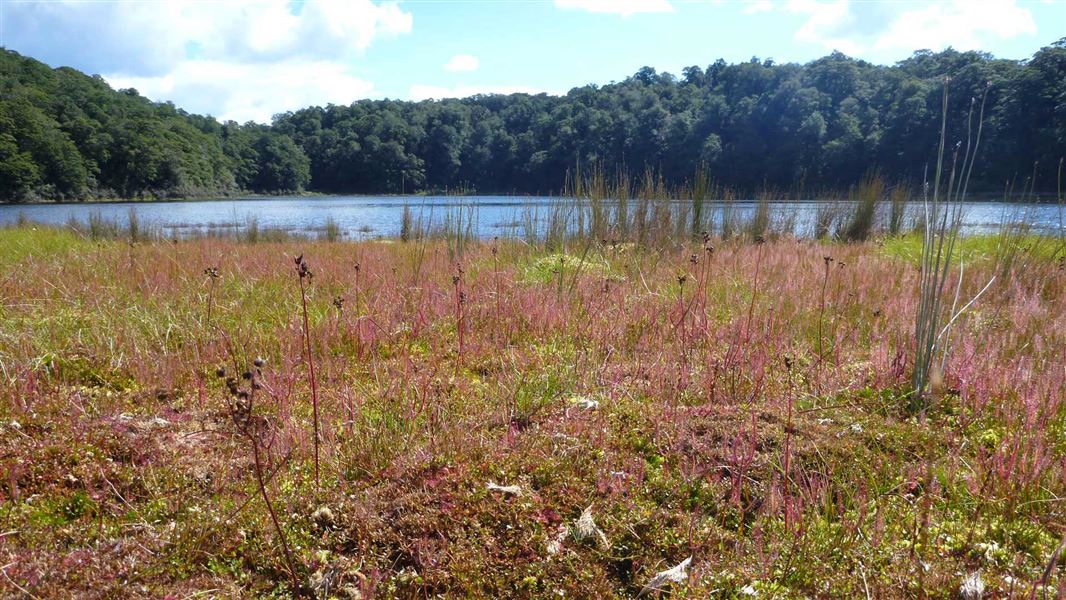Te Urewera is recognised in New Zealand law as a living person. Te Urewera is spoken for and governed by a board. Care for Te Urewera, including the tracks and facilities, is carried out by Te Uru Taumatua – Ngāi Tūhoe’s operational entity.
It will take you six hours of moderate to hard walking to complete the Ruapani Circuit. This description is in an anti-clockwise direction from the Waikareiti day shelter.
About half an hour beyond the Waikareiti day shelter, a left fork takes you onto the Ruapani Circuit Track, which passes several wetlands to exit onto the Lake Waikareiti Track again near the main road.
Distant views are rare but on the descent from Lake Ruapani, the final body of water, there is an enticing glimpse of Lake Waikaremoana, Panekire Bluff and Hawke's Bay in the distance.
Start on the Lake Waikareiti Walk, which begins 200 m from the Āniwaniwa Visitor Centre on the road to Rotorua.
Take warm clothing, food, drink and a raincoat.
The forest is consistently beautiful on this track, especially the profusion of neinei (pineapple scrub, Dracopyhllum latifolium). Interesting plants grow around some of the lakelets, e.g. the insectivorous sundew, and New Zealand's tallest species of tree, the kahikatea.
Ruapani tarns
The Ruapani tarns are a stunning complex of seven unmodified high-altitude mires and bogs.
Local past geological events have created a landscape of humps and hollows in which the Ruapani Tarns sit.
Each wetland is different from the others and include open water, sedgelands, sphagnum moss and wire-rush-dominated bogs, herbfields and shrublands. Most are ephemeral with constantly fluctuating water levels.
Scaups/pāpango, grey ducks/pārera, Australian coots and little black shags may be seen.
Stay safe in the outdoors
- Choose the right trip for you. Learn about the route and make sure you have the skills for it.
- Understand the weather. Check weather forecasts.
- Pack warm clothes and extra food. Check gear lists.
- Share your plans and take ways to get help. Leave your intentions with a trusted contact and take a distress beacon.
- Take care of yourself and each other.
Te Urewera Visitor Centre
| Phone: | +64 6 837 3900 |
| Email: | teureweravc@ngaituhoe.iwi.nz |
| Address: | Te Kura Whenua 6249 Lake Road/SH38 Waikaremoana 4195 Te Urewera |
| Hours: | Visitor centre services |
